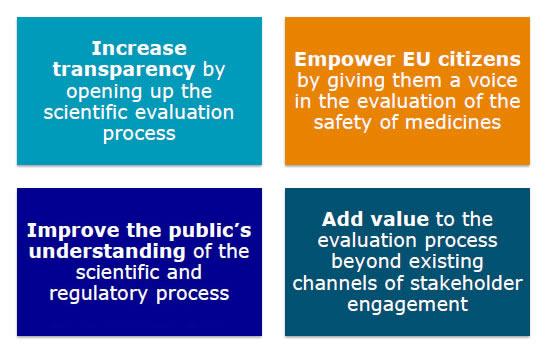Public hearings
Public hearings enable the European Medicines Agency (EMA) to engage EU citizens in medicine safety reviews. The Pharmacovigilance Risk Assessment Committee (PRAC) holds these hearings, gathering public insights to aid decision-making. PRAC decides on hearings case-by-case, and citizens can register to participate. Hearings, held in English and broadcast live, enhance transparency and public confidence in EMA’s regulatory decisions by addressing benefit-risk considerations and safety measures.
Corporate
